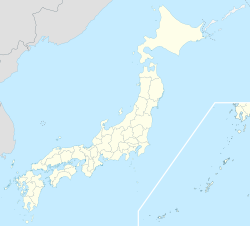
The Tokyo Disney Resort (東京ディズニーリゾート) is a theme park and vacation resort located in Urayasu, Chiba, Japan, just east of Tokyo. The resort is fully owned and operated by The Oriental Land Company under a license from The Walt Disney Company, which constructed and designed the resort and its various attractions through its Imagineering research & development arm.
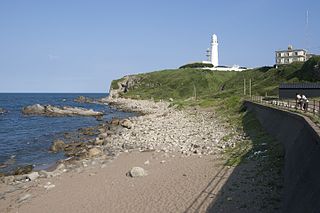
Chiba Prefecture is a prefecture of Japan located in the Kantō region of Honshu. Chiba Prefecture has a population of 6,278,060 and has a geographic area of 5,157 km2 (1,991 sq mi). Chiba Prefecture borders Ibaraki Prefecture to the north, Saitama Prefecture to the northwest, and Tokyo to the west.

Ōta is a special ward in the Tokyo Metropolis in Japan. The ward refers to itself in English as Ōta City. It was formed in 1947 as a merger of Ōmori and Kamata following Tokyo City's transformation into Tokyo Metropolis. The southernmost of the 23 special wards, Ōta borders the special wards of Shinagawa, Meguro and Setagaya to the north, and Kōtō to the east. Across the Tama River in Kanagawa Prefecture is the city of Kawasaki, forming the boundaries to the south and west.

Fukaya is a city located in Saitama Prefecture, Japan. As of 1 January 2021, the city had an estimated population of 229,517 in 142,803 households in 60804 households and a population density of 1023 persons per km2. The total area of the city is 138.37 square kilometres (53.42 sq mi). It is famous for a variety of welsh onions or Fukaya-negi (深谷ネギ).

Hamura is a city located in the western portion of the Tokyo Metropolis, Japan. As of 1 May 2010, the neighborhood had an estimated population of 57,174, and a population density of 5770 persons per km². The total area of the city was 9.90 square kilometres (3.82 sq mi).
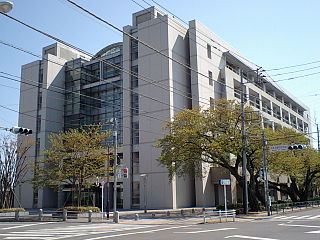
Akiruno is a city located in the western portion of the Tokyo Metropolis, Japan. As of 1 April 2021, the city had an estimated population of 80,177, and a population density of 1100 persons per km2. The total area of the city is 73.47 square kilometres (28.37 sq mi).

Arakawa is a special ward in the Tokyo Metropolis in Japan. The ward takes its name from the Arakawa River, though the river does not run through or touch the ward. Its neighbors are the wards of Adachi, Kita, Bunkyo, Taito and Sumida. In English, the ward calls itself Arakawa City.
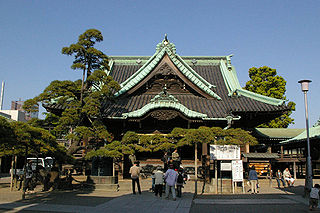
Katsushika is a special ward in the Tokyo Metropolis in Japan. It is known as Katsushika City in English.
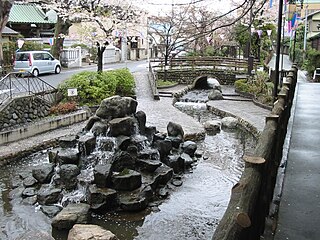
Edogawa is a special ward in the Tokyo Metropolis in Japan. It takes its name from the Edo River that runs from north to south along the eastern edge of the ward. In English, it uses the name Edogawa City.

Urawa is one of ten wards of the city of Saitama, in Saitama Prefecture, Japan. Located in the northeast of the city, Urawa is the governmental center of Saitama and houses most of the city's administrative offices including the city hall, as well as the offices of Saitama Prefectural government. Also, there are several newspaper branch offices and three broadcasting stations.
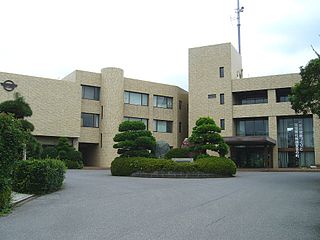
Kyonan is a town located in Chiba Prefecture, Japan. As of 1 November 2020, the town had an estimated population of 7,409 in 3543 households and a population density of 160 persons per km². The total area of the city is 45.16 square kilometres (17.44 sq mi).

The Oriental Land Company, Limited, also known as Oriental Land is a Japanese leisure and tourism subsidiary of the Keisei Electric Railway Company, headquartered in Urayasu, Chiba, Japan where it also owns and operates the Tokyo Disney Resort. The company operates in three segments, divided as theme parks, hotels, and other business. It is a component of the TOPIX Large70 index.

Mihama Ward is one of the six wards of the city of Chiba in Chiba Prefecture, Japan. As of April 2012, the ward had an estimated population of 149,314 and a population density of 7,060 persons per km2. The total area was 21.16 km2.

Kawasaki-ku (川崎区) is one of the seven wards of the city of Kawasaki in Kanagawa Prefecture, Japan. As of 2010, the ward had an estimated population of 216,826 and a density of 5,530 persons per km2. The total area was 39.21 square kilometres (15.14 sq mi). Kawasaki-ku has the home to the second largest Koreatown in Japan.

Kumagaya is a city located in Saitama Prefecture, Japan. As of 1 February 2021, the city had an estimated population of 195,277 in 87,827 households and a population density of 1200 persons per km2. The total area of the city is 159.82 square kilometres (61.71 sq mi).

Inage Ward is one of the six wards of the city of Chiba in Chiba Prefecture, Japan. As of April 2012, the ward had an estimated population of 156,860 and a population density of 7,380 persons per km2. The total area was 21.25 square kilometres (8.20 sq mi).

Midori Ward is one of the six wards of the city of Chiba in Chiba Prefecture, Japan. As of February 2016, the ward had an estimated population of 127,368 and a population density of 1920 persons per km2. The total area was 66.25 square kilometres (25.58 sq mi).

The Tokyo Bay City Koutsu Co., Ltd. is a bus company in Urayasu, Chiba Prefecture. The company was established in 1976 by The Oriental Land Company. It is jointly owned by the Keisei Group and the Oriental Land Company. The company headquarters and bus depot is located in Chidori in Urayasu.





